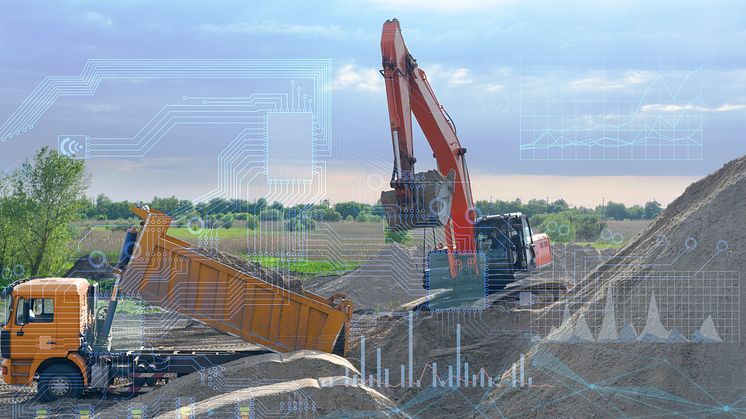
Press release -
Quiet humming instead of loud hammering: Electric mobility on construction sites
Construction sites are one of the largest sources of carbon dioxide emissions. The machines used in construction also contribute to these “gray emissions”. Many companies are currently switching to electromobility to improve their carbon footprint. Selling their old diesel machines can make it easier to invest in this new drive technology.
The construction industry accounts for almost 8% of global CO2 emissions. Most of it is generated in the production of construction materials, but construction work itself also contributes to this high figure. However, the industry is taking an active approach, and there are new approaches to reducing emissions from construction activities.
From the road to the construction site
There have been many advances in electric mobility in recent years, and it's hard to imagine road traffic without it. Whether it's electric cars, electric scooters or electric buses, private individuals have many low-emission options for getting around. In large cities, charging stations are part of every new construction concept, and states offer subsidies for purchasing a new electric car.
However, private and public transport are not the only areas where e-mobility can have an impact. A wide range of construction equipment manufacturers are currently working on ways to offer their heavy machinery in an electric version as well, thereby making work on construction sites more sustainable.
Same performance, lower emissions
The construction industry is aware of its responsibility for lower-emission construction and is already implementing improvements to combustion technologies for reducing pollution. However, its options here are limited. Electric drives for construction machinery are an innovative approach and a major leap towards climate neutrality.
After initial skepticism about whether electrically powered machines would be able to deliver the same performance in construction as those using conventional combustion engines, major brands have already proven otherwise, bringing excavators, wheel loaders and other heavy machinery with electric motors to the construction site.
In early 2018, the Swiss company eMining made its first foray with the "eDumper" dump truck, whose four-and-a-half-ton battery achieved a capacity of 710 kWh. Its special feature: The battery converts braking energy back into electricity when driving downhill, which can then be used for further work. Another pioneer was the JCB 19C-I electric mini excavator, whose three lithium-ion batteries are capable of delivering a capacity of 15 kWh. It was launched in mid-2019.
Since then, other major brands have also been making inroads into the e-machine market, offering their own heavy machinery in electric versions as well. For example, Caterpillar has invested over $30 billion in R&D over the past 20 years and is now working to offer “electric products, components and power delivery solutions”. The mini-excavator 301.9 can be charged overnight, after which it can be used for six to eight hours. And the CAT 320 electric crawler excavator manages the same output as its diesel-powered counterpart thanks to its 600-volt battery.
When construction sites no longer disturb the neighbors
Demand for electric heavy machinery is growing because they have other advantages apart from their carbon footprint.
Because there are fewer moving parts on electric vehicles, they require less maintenance. They generate fewer machine vibrations and are quieter overall thanks to the absence of a noisy diesel engine. Especially when used in downtown construction sites, this can eliminate much of the noise pollution. Electric machines can also be networked with each other for optimum deployment in a digitalized construction site concept.
But for the electric mobility trend to catch on in the construction industry, it is first important to establish a reliable charging structure, thus ensuring that the machines can be charged directly at the construction site using mobile charging stations.
Freeing up budget for the road ahead
Modernizations in companies often fail not because of doubts regarding innovations, but because of a lack of budget. A good way to free up budget is to sell old machines.
Often, unused machines are scrapped or sold on to contacts in one's own region. When selling, it can be worthwhile to work with professionals to expand the potential circle of buyers to the entire world and thus get the best deal. The industrial auction house Surplexhas been an expert in the sale of used machinery for more than 20 years. With offices in 15 European countries, Surplex offers an international platform and expert all-round support for the sale of used machinery.
About Surplex
Surplex is one of Europe’s leading industrial auction houses and trades worldwide in used machines and factory equipment. The 16-language auction platform Surplex.com is visited around 50 million times every year. It sells more than 55,000 industrial products per year in over 800 online auctions. The company is based in Düsseldorf and has offices in 15 European countries. Over 220 employees from 20 different nations generate an annual turnover of more than 100 million euros.

